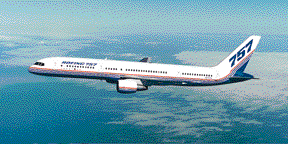 |
|||||
| Home | Research | For Teachers | HISTORY Level 1 Level 2 Level 3 |
PRINCIPLES Level 1 Level 2 Level 3 |
CAREER Level 1 Level 2 Level 3 |
| Gallery | Hot Links | What's New! | |||
| Web Administration and Tools | |||||
 |
|||||
| Home | Research | For Teachers | HISTORY Level 1 Level 2 Level 3 |
PRINCIPLES Level 1 Level 2 Level 3 |
CAREER Level 1 Level 2 Level 3 |
| Gallery | Hot Links | What's New! | |||
| Web Administration and Tools | |||||
![]()
Why learn about Theory of Flight?
 The
pilot today has a large variety of airplanes from which to choose. Of these airplanes many
may fly at less than 100 knots top speed while others are capable of speeds well into the
hundreds of knots. Some are single seaters carrying only the pilot, while others, even in
the single engine light airplane class may carry 10 or more passengers. Some airplanes
have laminar flow airfoil sections; others have airfoils of conventional design. A few
light airplanes fly at 3 1/2 times their stalling speed; others do well to cruise at 1 1/3
times their stalling speed. Every one of these airplanes has different flight
characteristics. If a pilot has a good grasp of the fundamentals of flight, he will
understand what to expect of each different airplane that he may have the opportunity to
fly. He will understand how best to handle each airplane as a result of his knowledge of
the theory of flight and of the airplane’s design. He will comprehend the various
loads to which an airplane of a particular design may be exposed while flying under
abnormal or adverse conditions of flight. Not only to get the best performance but also to
ensure the safety of each flight, an understanding of Theory of Flight is very essential.
The
pilot today has a large variety of airplanes from which to choose. Of these airplanes many
may fly at less than 100 knots top speed while others are capable of speeds well into the
hundreds of knots. Some are single seaters carrying only the pilot, while others, even in
the single engine light airplane class may carry 10 or more passengers. Some airplanes
have laminar flow airfoil sections; others have airfoils of conventional design. A few
light airplanes fly at 3 1/2 times their stalling speed; others do well to cruise at 1 1/3
times their stalling speed. Every one of these airplanes has different flight
characteristics. If a pilot has a good grasp of the fundamentals of flight, he will
understand what to expect of each different airplane that he may have the opportunity to
fly. He will understand how best to handle each airplane as a result of his knowledge of
the theory of flight and of the airplane’s design. He will comprehend the various
loads to which an airplane of a particular design may be exposed while flying under
abnormal or adverse conditions of flight. Not only to get the best performance but also to
ensure the safety of each flight, an understanding of Theory of Flight is very essential.
The study of theory of flight and aerodynamics can be a lifetime proposition. New theories are forever being put forward. Some questions have answers that are difficult to find. Others perhaps do not yet have adequate answers. The information that comprises this section can only be considered an introduction to a substantial, but fascinating, topic in aviation.
Send all comments to ![]() aeromaster@eng.fiu.edu
aeromaster@eng.fiu.edu
© 1995-98 ALLSTAR Network. All rights reserved worldwide.
Updated: February 23, 1999